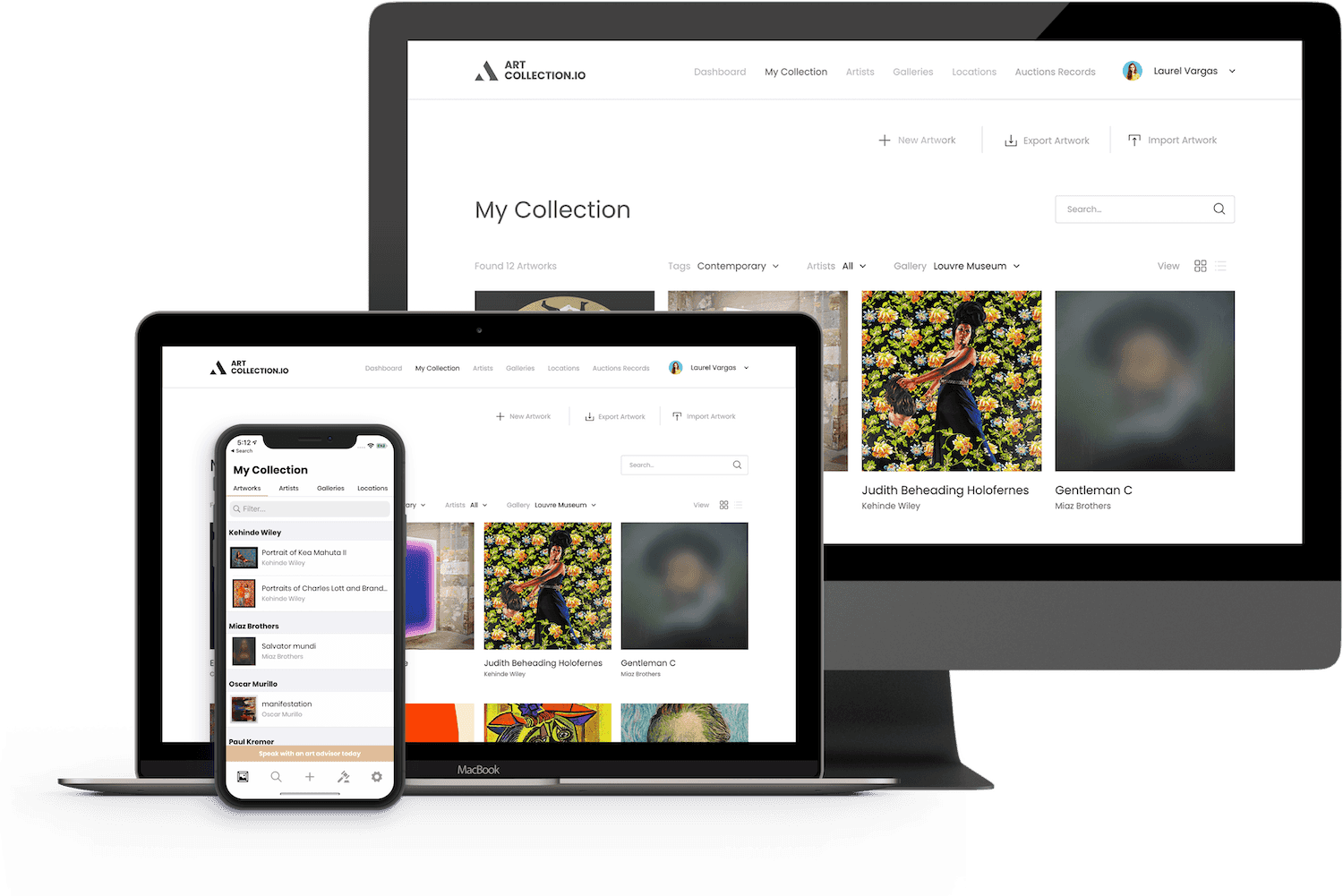

Available on any device, mac, pc & more
ArtCollection.io is a cloud based solution that gives you access to your collection anywhere you have a secure internet connection. In addition to a beautiful web dashboard, we also provide users with a suite of mobile applications that allow for data synchronization and offline browsing. Feel confident in your ability to access your art collection anywhere around the world at anytime. Download ArtCollection.io today!


Available on any device, mac, pc & more
ArtCollection.io is a cloud based solution that gives you access to your collection anywhere you have a secure internet connection. In addition to a beautiful web dashboard, we also provide users with a suite of mobile applications that allow for data synchronization and offline browsing. Feel confident in your ability to access your art collection anywhere around the world at anytime. Download ArtCollection.io today!



